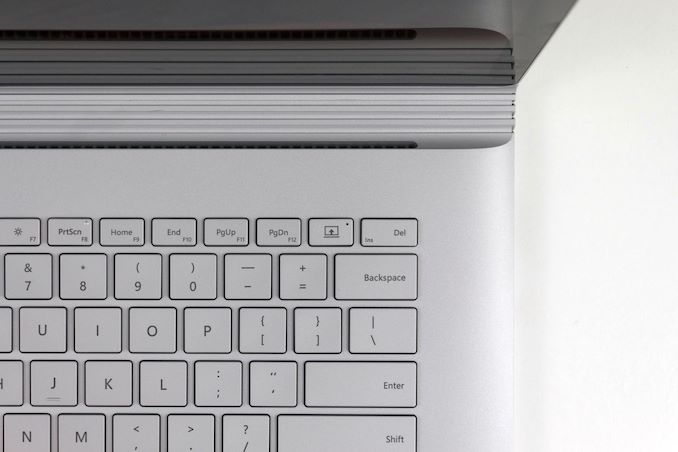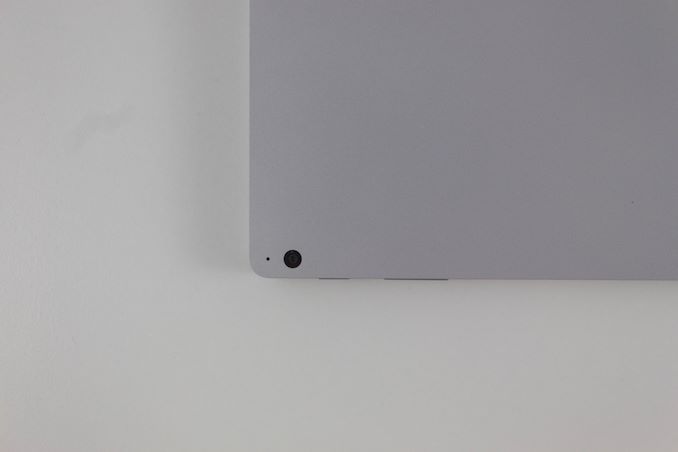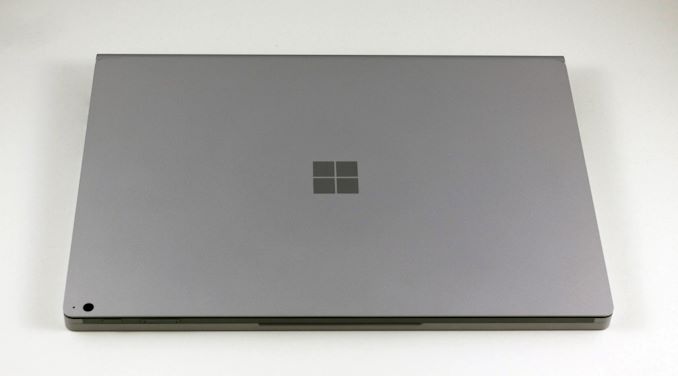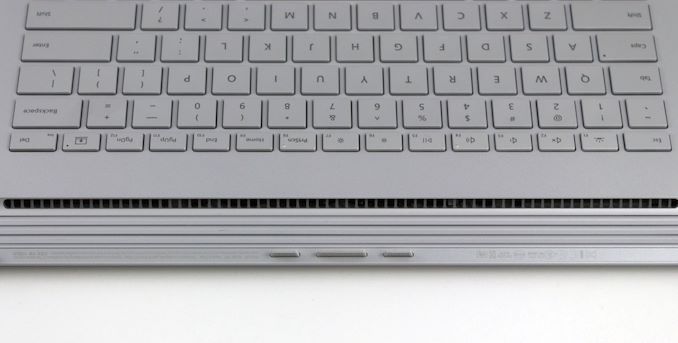The Microsoft Surface Book 3 (15-Inch) Review: A Refreshing Dip Into Ice Lake
by Brett Howse on June 3, 2020 9:00 AM ESTFinal Words
The Surface Book 3 delivers a solid refresh to Microsoft's detachable laptop family, offering more of almost everything. There is more performance thanks to the new Core i7-1065G7 and GeForce GTX 1660 Ti. There is more RAM thanks to the switch to LPDDR4X. The new 10 nm processor provides better battery life. The Wi-Fi is much improved thanks to the new Intel AX201 Wi-Fi 6 adapter. Even the USB ports got an upgrade to USB 3.2 Gen 2, while the Surface Connect port now offers the same 3.2 Gen 2 speeds along with DisplayPort 1.4 for dual-UHD external monitor support. If you loved the idea of the Surface Book 2 but thought it was a bit long in the tooth or otherwise underpowered, the new Surface Book 3 delivers all of the upgrades needed to keep it a proper current generation notebook.
Surface devices have always offered a great build quality, and the Surface Book 3 continues that legacy with its magnesium alloy chassis. Microsoft has improved the undocking mechanism to make it faster, and improvements to DirectX 12 mean that the system is finally able to automatically migrate active workloads from the discrete GPU to the integrated one when detaching, at least as long as the active application supports this.
The Surface Book 3, like the Surface Book 2, offers one of the best typing experiences on any notebook, and couples it with one of the best trackpads around. The display is still identical to the outgoing model, but that display is also one of the best available on a notebook, so it is hard to fault them for keeping it.
Microsoft still includes 1080p video recording support, with a 5 MP front facing camera and 8 MP rear facing camera, and coupled with the dual far-field microphones makes the Surface Book 3 an ideal, if somewhat overpowered, video conferencing device.
There is no denying that the upgrades have worked well. If there was a complaint, it would be that this is now the third generation of more or less the same design, and while a design that is still impressive, it also is showing its age. The large display bezels, while partially required due to the convertible nature of the Surface Book, stand out in a premium device in 2020. The lack of Thunderbolt 3 support is also an increasingly glaring omission when all of their competitors offer it. It took Microsoft a long time to adopt USB Type-C for reasons only they seem to understand, and while it is nice to finally have that, a universal docking solution over Thunderbolt 3 would serve them well.
The Surface Book 3 still does fulfill its role though as a very powerful laptop, built with premium materials, and offering some unique features. The upgrades for 2020 were necessary to keep the design relevant, even if is relatively unchanged on the outside. The new configuration options, especially the ability to purchase it with 32 GB of RAM, opens up the device to those who need a lot of RAM for their workflows, and being able to purchase it with Quadro RTX also opens the door to some new mobile workstation use cases. Surface Book is never going to be the sales leader in the Surface lineup, mostly due to the price, but there is no denying that it is still one of the best notebooks on the market.














125 Comments
View All Comments
TheinsanegamerN - Tuesday, June 9, 2020 - link
WOOOOOSHSpunjji - Thursday, June 4, 2020 - link
I haven't ever had a work laptop with a screen resolution higher than 1080p. Your comment is invalid.Deicidium369 - Friday, June 5, 2020 - link
Our previous Dell 13 2-in-1 had the 4K screen - utterly unusable - opted for the 1920x1200 in the new 13 2-in-1s. much more usableschujj07 - Thursday, June 4, 2020 - link
While high resolution screens are nice, in the end you wind up with the equivalent space of 1080p because of DPI scaling. I have a 13.3" laptop with a 3200x1800 screen. I run it at 1080p to reduce GPU load and without DPI scaling everything is too small. Before you say I just need glasses, I have 20/10 vision.cpufrost - Thursday, June 4, 2020 - link
Scaling is fine. I'm typing this on a Dell XPS 13 9370 with 3840x2160 screen scaled to 250%. The text is super crisp like typeset quality. Lower resolution displays make the text look horrible like I'm trying to read a newspaper through a screen door.Spunjji - Friday, June 5, 2020 - link
Yeah I'm never sure what's going on when people bag on Windows scaling. It's been usable since 8.1 and probably the best in the industry since 10. I run my 4K displays at 200% for a nice balance between screen real estate and text clarity.Some apps still don't like it - for some reason people blame Windows, not the apps.
schujj07 - Friday, June 5, 2020 - link
I'm not ragging on Windows scaling. I was just stating that as soon as you use 250% DPI scaling you get rid of all of the extra screen real estate that you get from the higher resolution. Even at 1080p with a 15" monitor the text is nice and crisp. Granted if you have a junk monitor it won't matter. For example a 15" screen at 1080p has a PPI of 146.86, that is higher than the PPI of my 34" 1440p ultrawide. That is also equal to the PPI of a 30" 4k screen.watzupken - Wednesday, June 3, 2020 - link
I don't disagree there is little reason to go for a high end ultrabook/ slim laptops nowadays. However PC manufacturers still reserve higher end components, i.e. monitor, bigger battery, etc... So I think it really depends on your needs. In terms of performance, I feel there is little difference whether its low, mid or high end, since cooling is sorely lacking to give emphasis on a slim build.eastcoast_pete - Wednesday, June 3, 2020 - link
The split of the CPU and GPU into display/tablet (CPU) and keyboard (dGPU) is actually one of the smarter design elements of the Surface Pro, as that alleviates some of that "too much heat in not enough space". However, one of those in 15" with a Ryzen 4700 or 4800u even without the dGPU would be what I'd like to see, especially for less money. If one could then add the dGPU later on to the keyboard part, it could even provide an upgrade path.
s.yu - Thursday, June 4, 2020 - link
Technically you should be correct, but according to this guy(the author) even a 2060 is "a bit too much" for this 15" device. He seems so wrong on the whole GPU picture I don't know where to start.